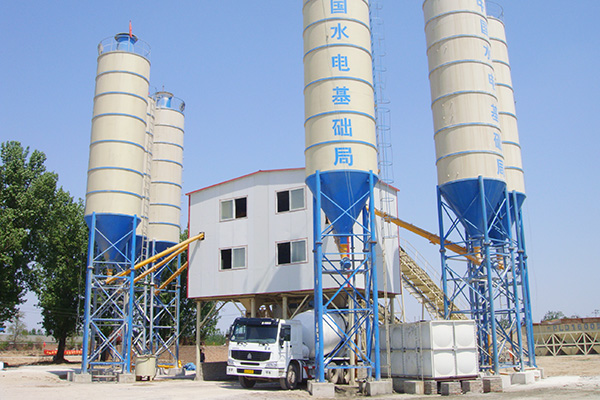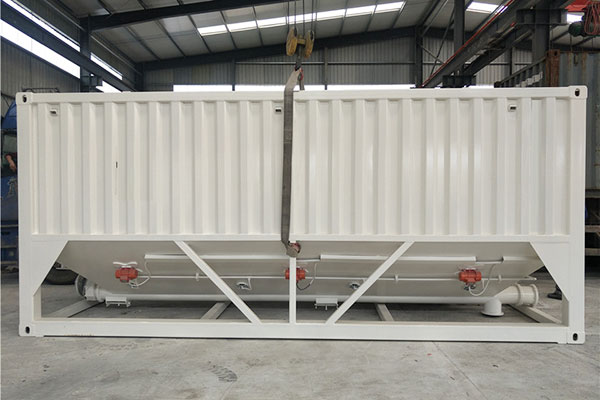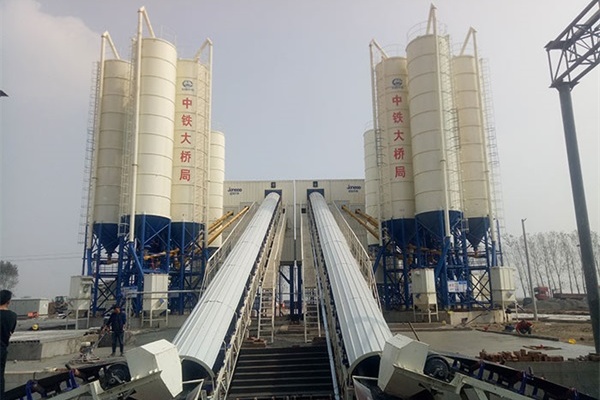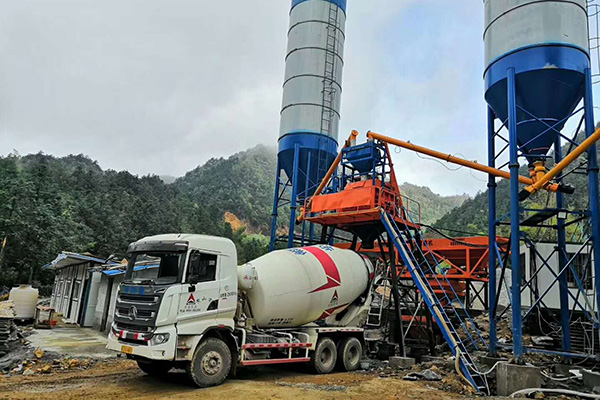The concrete batching plant is a combined device for concentrated mixing of concrete. It is commonly used in large-sized and medium-sized water conservancy, electric power, highway, bridges and other projects with large demand of concrete, long construction period and concentrated construction sites.
There're some concrete batching plant environmental issues with the development of concrete construction equipment such as concrete batching plant, sand making machine. This article tells several pollution solutions of concrete batching plant.
1.Cement and Fly Ash
Environmental Impacts
Concrete batching plants must be designed and operated to prevent cement and fly ash from being blown, swept, hosed or left to be washed by rain into gutters or the stormwater system. Cause wind-blown cement and fly ash can cause an environmental (dust) nuisance by affecting the health and well-being of residents and damaging property such as vehicles. Camelway Machinery provides professional configuration solution according to customers’ demand.
Silo Dust Control Equipment
Cement storage silos need to be fitted with equipment to minimize dust emissions from the silo. A reverse pulse fabric filter dust collector (FFDC) or other dust control technology with an equivalent or better performance is recommended for storage silos.
Whatever technology is employed, anyway, it needs to be maintained in accordance with the manufacturer’s instructions to ensure adequate and efficient performance. Camelway can help you try to avoid this issue.
2. Sand and Aggregates
Environmental Impacts
Sand and aggregates need to be kept out of stormwater drains, creeks and other waterways cause they are prescribed water contaminants that can degrade or destroy aquatic habitats. Concrete batching plants must be designed and operated to prevent dust and aggregates from being blown, swept, hosed or left to be washed by rain into gutters or the stormwater system.
Sand and Aggregates Stockpiles
Sand and aggregates should be delivered in a dampened state, using covered trucks. If the materials have dried out during transit they should be dampened again before being dumped into the storage bin to minimize dust emissions during loading.
3.Batching, Slumping and Delivery
Truck Loading Bay
The truck loading bay is a potential source of dust and water pollution. Raw materials should be loaded into the truck agitators by either a telescopic chute (preferred) or a flexible sleeve to prevent spillage. Spillage can also be avoided by putting in place measures to ensure truck agitators are not overfilled.
Slumping
New slump stands and bays – and their wheel-wash facilities – should be connected to the water management system (see Water management section) to prevent contaminants such as spilt cement, aggregate or concrete slurry from entering stormwater drains. It is important to design slump stands to avoid trucks driving through slurry water generated by wash-downs. New batching plants should be designed to enable recycled water from the water management system to be used for slumping.
Transport and Delivery
New concrete batching plants need to have wheel-wash facilities to prevent contaminants from being tracked out of the site on truck tyres on to the street, where they can be washed into stormwater drains. All trucks should be provided with spill kits to cover clean-up needs in transit. Spills during transit need to be cleaned up immediately to prevent contaminants entering stormwater drains or waterways.
4. Water Management
Environmental Impacts
Wastewater from concrete batching plants may contain potential pollutants such as cement, sand and aggregates.
Wastewater Collection and Treatment System
Concrete batching plants require a wastewater collection and treatment system to capture contaminated process water and stormwater. This prevents and minimizes contaminated water entering off-site stormwater drains, creeks or other waterways.
All in all, good environmental management practices do more than preserve the natural environment – they can save businesses money. Minimizing wasting, increasing resource efficiency and recovery and adopting cleaner production methods have been shown to reduce operating costs.
Camelway is specialized in manufacturing concrete construction equipment. Besides, we provide professional solution according to you needs, such as providing concrete batching plant environmental solution. Quality and professional are our Spokesman. Our products have sold to all over the world.






